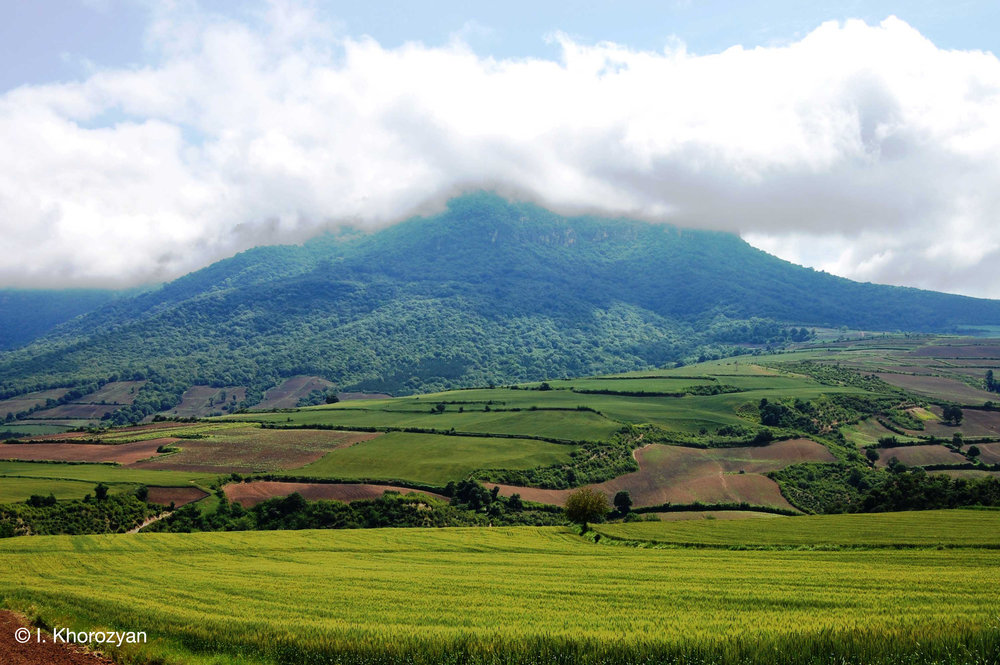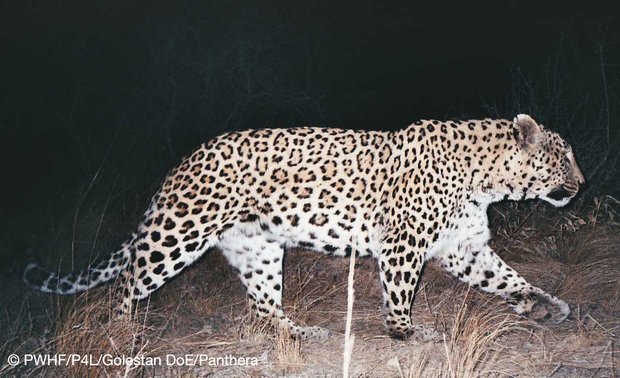Well-trained shepherds, dogs minimize human-carnivore conflicts

Dr. Igor Khorozyan is well known for his works on large mammalian carnivores and wildlife assessment. He and his Iranian colleagues tried to study individual leopard attacks on sheep and goats in 34 villages near Golestan National Park. They obtained and analyzed data on 39 attacks and evaluated the effects of shepherds and dogs on livestock depredation by leopards in north-eastern Iran. Tehran Times had an interview with Dr. Khorozyan to discuss some of the latest issues in this field.
Below is the text of the interview.
Q: The current status of dogs (feral, stray and livestock guarding dogs) in Iran has raised some concerns among conservation biologists. Why is that?
A: Our research is related to livestock guarding dogs, not feral or stray ones. There are two categories of dogs dealing with livestock: guarding dogs and herding dogs. Guarding dogs like Kangals or German shepherds are able to detect and successfully deter predators from livestock. Herding dogs like collies are used to move livestock and keep them in a group. Both guarding and herding dogs require careful training since the early days of a pup’s life and untrained dogs can create lots of problems, also for conservation. Some dogs may attack livestock and other animals, the others hunt wild animals and some even may attack humans. It is well known that getting killed by dogs is one of the most important mortality factors for critically endangered Asiatic cheetahs which survive today only in Iran. Wildlife hunting can be an everyday pastime for dogs which are not properly fed by owners and need to find food elsewhere.

A serious conservation issue that we found in our research is that guarding dogs in villages around Golestan National Park cannot protect sheep and goats from leopards efficiently. As a result, leopards keep on killing livestock and die from human persecution. The presence of dogs near sheep and goats is not a guarantee of safety and dogs themselves can often be killed by leopards. Cattle usually graze on their own, without shepherds or dogs, what also may increase vulnerability of cattle to leopard attacks.
Regarding feral or stray dogs, they can be even more dangerous than wild predators because they do not avoid humans and may openly exert aggressive actions towards people, pets and livestock. Importantly, stray and feral dogs may transmit diseases dangerous for humans and domestic animals like rabies, canine distemper, parasites and others.
Q: Why dogs are among the most preferred prey species for leopards? What dangers can it bring?
A: Yes, leopards like to eat dogs and in some areas, like agricultural lands in southern India, dogs become the main prey for leopards. Leopards are tempted to kill medium-sized or small dogs as they are easy to catch, and their barking and nervous behavior may even provoke leopards for attacks. In Golestan, the situation is different as leopards frequently kill dogs, but consume them quite rarely. It means that dogs are killed more in retaliatory attacks rather than as prey.
Q: Would you please tell me about the importance of shepherd and guarding dog assessment in Golestan National Park?
A: Our team works in Golestan for many years and considers this national park as a model for leopard conservation in all Iran and even in the Middle East. In light of this, it becomes essential to understand how local husbandry practices like herding by shepherds, work of guarding dogs and protective shelters for keeping livestock at night are capable to reduce livestock losses to leopards. The logic is simple: the better shepherds and dogs work, the less livestock are killed by leopards and the fewer leopards are killed by people as enemies.
Q: What measures can you suggest to improve the performance of shepherds and dogs?
A: First of all, dogs should be raised to keep closer contacts with livestock and not with humans. The reality in Golestan is that dogs are tied too much with their owners and therefore they cannot protect livestock from leopards. Only best available dogs should be used for guarding and not all dogs that the owner has. The performance of shepherds should also be improved. Many shepherds are old, they work alone with a big flock of sheep and goats, and they cannot react properly to leopard attacks. Even when seeing an attacking leopard, shepherds shout and throw stones, but it does not help. Also, the number of available shepherds is limited and decreasing as young men do not want to become shepherds and they prefer to find well-paid jobs in towns. To cope with this problem, we suggest that shepherds merge their flocks and herd them together. The results of studies in Africa show that shepherds work much more efficiently when they are able to communicate with each other during the day and to become more responsible for their duties.]

Q: Do you believe that leopards in Golestan National Park are threatened somehow by the presence of dogs?
A: Potentially, leopards can be susceptible to diseases that dogs may transmit. For example, canine distemper spread through dogs has become a real threat to endangered Siberian tigers and Amur leopards in the Russian Far East. In some areas of Africa, the use of dogs is prohibited because they can infect wildlife. Of course, we do not suggest stopping the use of dogs in Golestan or other areas of Iran, but veterinarian services should pay careful attention to dog health.
Q: What approaches may help reduce human-carnivore conflicts in developing countries such as Iran where livestock depredation has become so common?
A: The general approaches are three, depending on availability of wild prey for carnivores. If prey is abundant and attacks on livestock are only few, problematic individuals can be removed or translocated without causing damage to the whole population of the carnivore. This situation is not relevant to Iran as prey resources, except for wild boar, are depleted in most areas of the country. The second scenario is when populations of wild prey are too small and carnivores have to kill livestock to survive. In this case, the solutions are compensation to livestock owners and recovery of wild prey populations. However, the success of compensation programs to reduce livestock losses is debatable as they require sustainable funding, adequate management and, most importantly, they provide guaranteed reimbursement but may not stimulate owners to better protect their livestock from carnivores or stop retaliatory killing. The third scenario is most important for Iran as it describes the situations when prey populations are medium to low and livestock depredation is stable or increasing. The solution is simultaneous implementation of prey recovery and livestock protection measures. Our projects in Golestan are just directed towards finding the best practices of livestock protection from leopards which would be suitable for local people and also for leopards.
It is important to note that prey recovery leads to increased populations of carnivores and this, in its turn, may cause higher depredation on livestock. More carnivores need more food. It means that better protection of livestock is essential in all situations when people co-exist with carnivores, particularly in villages located close to protected areas like
